Yamaha Audio CLP-950M, CLP-950C, CLP-930, CLP-950 User Manual
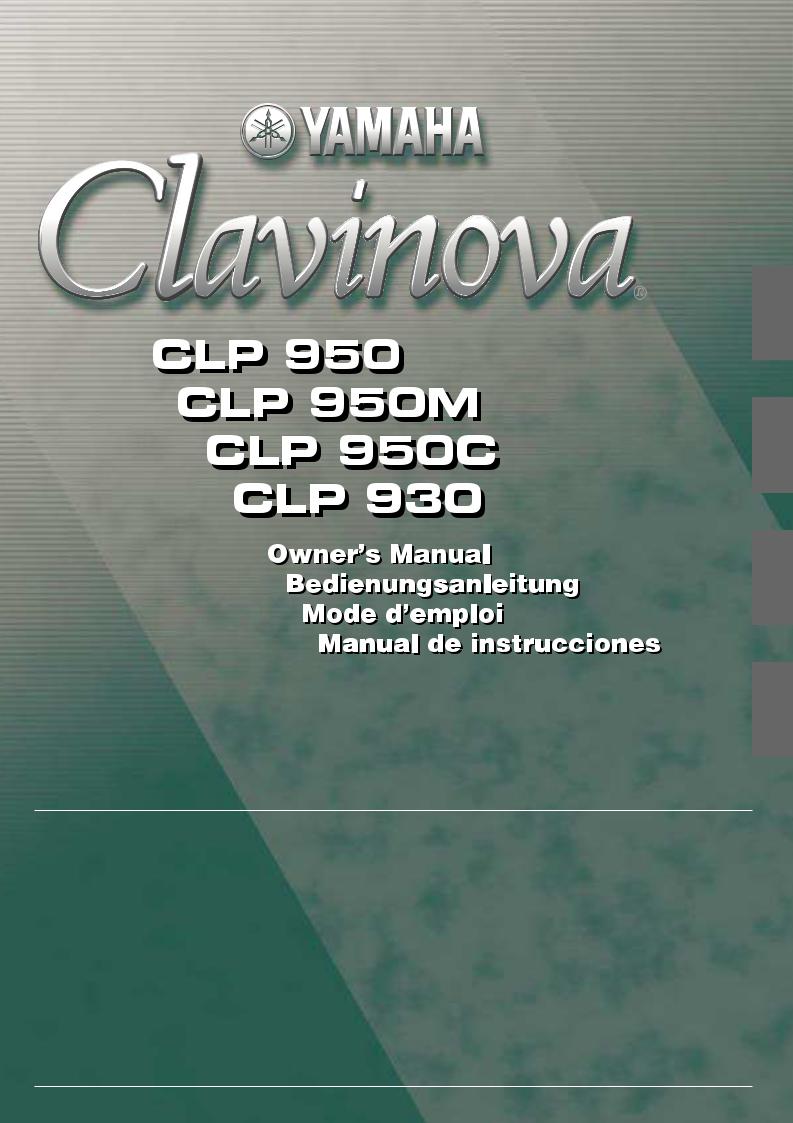
IMPORTANT |
|
|
|
|
|
|
|
|
|
|
|
|
|
|
|
|
|
|
|
|
|
|
|
|
|
|
|
|
|
|
|
|
|
|
|
|
|
|
|
|
|
|
|
|
|
|
|
|
|
|
|
|
|
|
|
|
|
|
|
|
|
|
|
|
|
|
|
|
|
|
|
|
|
|
|
|
|
|
|
|
|
|
|
|
|
|
|
|
|
|
|
|
|
|
|
|
|
|
|
|
|
|
|
|
|
|
|
|
|
|
|
|
|
|
|
|
|
|
|
|
|
|
|
|
|
|
|
|
|
|
|
|
|
|
|
|
|
|
|
|
|
|
|
|
|
|
|
|
|
|
|
|
|
|
|
|
|
|
|
|
|
|
|
|
|
|
|
|
|
|
|
|
|
|
|
|
|
|
|
|
|
|
|
|
|
|
|
|
|
|
|
|
|
|
|
|
|
|
|
|
|
|
|
|
|
|
|
|
WICHTIG |
IMPORTANT |
|||||||||||||||||
Check your power supply |
†berprŸfung der Stromversorgung |
Contr™ler la source dÕalimentation |
||||||||||||||||
Make sure that your local AC |
Vergewissern Sie sich vor dem An- |
VŽrifiez que la tension spŽcifiŽe sur |
||||||||||||||||
mains voltage matches the volt- |
schlie§en an das Stromnetz, da§ die |
le panneau infŽrieur correspond ˆ |
||||||||||||||||
age specified on the name plate |
šrtliche Netzspannung den |
la tension du secteur. Dans certai- |
||||||||||||||||
on the bottom panel. In some ar- |
Betriebsspannungswerten auf dem |
nes rŽgions, lÕinstrument peut •tre |
||||||||||||||||
eas a voltage selector may be |
Typenschild an der Unterseite des In- |
ŽquipŽ dÕun sŽlecteur de tension si- |
||||||||||||||||
provided on the bottom panel of |
struments entspricht. In bestimmten |
tuŽ sur le panneau infŽrieur du cla- |
||||||||||||||||
the main keyboard unit near the |
Verkaufsgebieten ist das Instrument |
vier ˆ proximitŽ du cordon dÕalimen- |
||||||||||||||||
power cord. Make sure that the |
mit einem SpannungswŠhler an der |
tation. VŽrifiez que ce sŽlecteur est |
||||||||||||||||
voltage selector is set for the volt- |
Unterseite neben der Netzkabel- |
bien rŽglŽ en fonction de la tension |
||||||||||||||||
age in your area. The voltage se- |
durchfŸhrung ausgestattet. Falls vor- |
secteur de votre rŽgion. Le sŽlec- |
||||||||||||||||
lector is set at 240V when the unit |
handen, mu§ der SpannungswŠhler |
teur de tension est rŽglŽ sur 240 V |
||||||||||||||||
is initially shipped. To change the |
auf die šrtliche Netzspannung einge- |
au dŽpart dÕusine. Pour modifier ce |
||||||||||||||||
setting use a ÒminusÓ screwdriver |
stellt werden. Der SpannungswŠhler |
rŽglage, utilisez un tournevis ˆ lame |
||||||||||||||||
to rotate the selector dial so that |
wurde werkseitig auf 240 V voreinge- |
plate pour tourner le sŽlecteur afin |
||||||||||||||||
the correct voltage appears next |
stellt. Zum Verstellen drehen Sie den |
de mettre lÕindication correspondant |
||||||||||||||||
to the pointer on the panel. |
Spannungsregler mit einem Schlitz- |
ˆ la tension de votre rŽgion vis ˆ vis |
||||||||||||||||
|
schraubendreher, bis der Zeiger auf |
du rep•re triangulaire situŽ sur le |
||||||||||||||||
|
den korrekten Spannungswert weist. |
panneau. |
||||||||||||||||
ENGLISH
DEUTSCH
FRAN‚AIS
ESPA„OL
IMPORTANTE
Verifique la alimentaci—n de corriente
Asegœrese de que tensi—n de ali- mentaci—n de CA de su ‡rea corresponde con la tensi—n especificada en la placa de caracter’sticas del panel inferior. En algunas zonas puede haberse incorporado un selector de tensi—n en el panel inferior de la unidad del teclado principal, cerca del cable de alimentaci—n. Asegœrese de que el selector de tensi—n estŽ ajustado a la tensi—n de su ‡rea. El selector de tensi—n se ajusta a 240V cuando la unidad sale de f‡brica. Para cambiar el ajuste, emplee un destornillador de cabeza ÒrectaÓ para girar el selector de modo que aparezca la tensi—n correcta al lado del indicador del panel.
Downloaded from: http://www.usersmanualguide.com/

SPECIAL MESSAGE SECTION
PRODUCT SAFETY MARKINGS: Yamaha electronic products may have either labels similar to the graphics shown below or molded/stamped facsimiles of these graphics on the enclosure. The explanation of these graphics appears on this page. Please observe all cautions indicated on this page and those indicated in the safety instruction section.
CAUTION |
RISK OF ELECTRIC SHOCK |
DO NOT OPEN |
CAUTION: TO REDUCE THE RISK OF ELECTRIC SHOCK. |
DO NOT REMOVE COVER (OR BACK). |
NO USER-SERVICEABLE PARTS INSIDE. |
REFER SERVICING TO QUALIFIED SERVICE PERSONNEL. |
See bottom of Keyboard enclosure for graphic symbol markings
The exclamation point within the equilateral triangle is intended to alert the user to the presence of important operating and maintenance (servicing) instructions in the literature accompanying the product.
The lightning flash with arrowhead symbol, within the equilateral triangle, is intended to alert the user to the presence of uninsulated Òdangerous voltageÓ within the productÕs enclosure that may be of sufficient magnitude to constitute a risk of electrical shock.
IMPORTANT NOTICE: All Yamaha electronic products are tested and approved by an independent safety testing laboratory in order that you may be sure that when it is properly installed and used in its normal and customary manner, all foreseeable risks have been eliminated. DO NOT modify this unit or commission others to do so unless specifically authorized by Yamaha. Product performance and/or safety standards may be diminished. Claims filed under the expressed warranty may be denied if the unit is/has been modified. Implied warranties may also be affected.
SPECIFICATIONS SUBJECT TO CHANGE: The information contained in this manual is believed to be correct at the time of printing. However, Yamaha reserves the right to change or modify any of the specifications without notice or obligation to update existing units.
ENVIRONMENTAL ISSUES: Yamaha strives to produce products that are both user safe and environmentally friendly. We sincerely believe that our products and the production methods used to produce them, meet these goals. In keeping with both the letter and the spirit of the law, we want you to be aware of the following:
92-469 1
Battery Notice: This product MAY contain a small nonrechargable battery which (if applicable) is soldered in place. The average life span of this type of battery is approximately five years. When replacement becomes necessary, contact a qualified service representative to perform the replacement.
Warning: Do not attempt to recharge, disassemble, or incinerate this type of battery. Keep all batteries away from children. Dispose of used batteries promptly and as regulated by applicable laws. Note: In some areas, the servicer is required by law to return the defective parts. However, you do have the option of having the servicer dispose of these parts for you.
Disposal Notice: Should this product become damaged beyond repair, or for some reason its useful life is considered to be at an end, please observe all local, state, and federal regulations that relate to the disposal of products that contain lead, batteries, plastics, etc.
NOTICE: Service charges incurred due to lack of knowledge relating to how a function or effect works (when the unit is operating as designed) are not covered by the manufacturerÕs warranty, and are therefore the owners responsibility. Please study this manual carefully and consult your dealer before requesting service.
NAME PLATE LOCATION: The graphic below indicates the location of the name plate. The model number, serial number, power requirements, etc., are located on this plate. You should record the model number, serial number, and the date of purchase in the spaces provided below and retain this manual as a permanent record of your purchase.
CLP-950/950M/950C
CLP-930
Model _____________________________________
Serial No. __________________________________
Purchase Date ______________________________
Downloaded from: http://www.usersmanualguide.com/
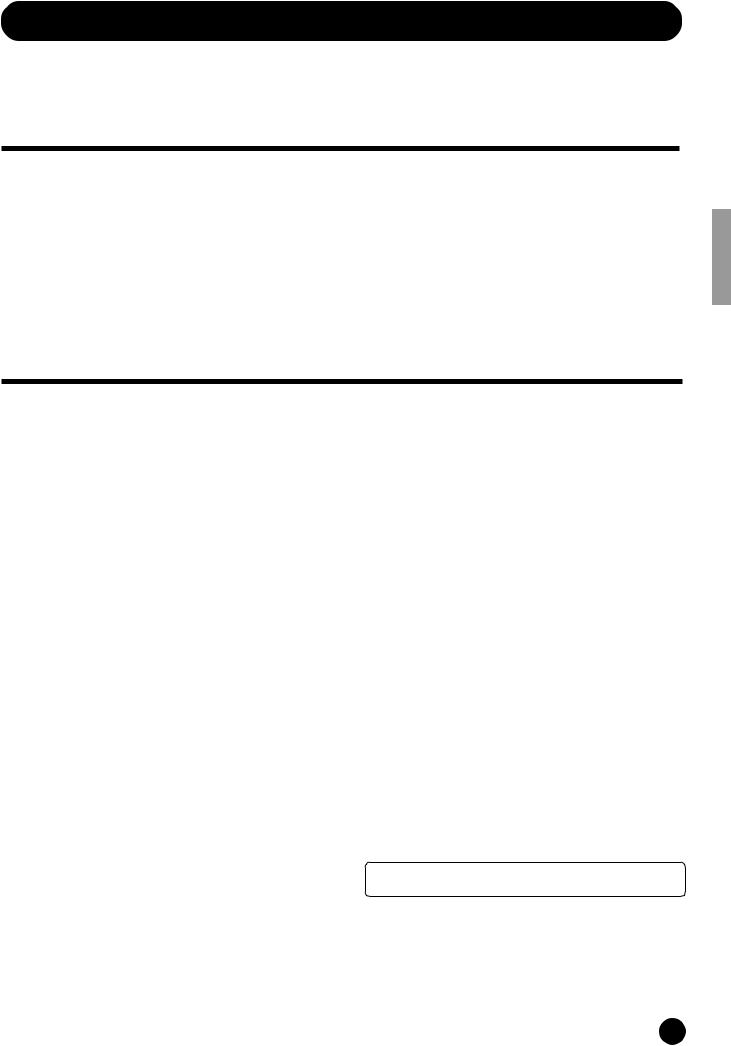
PRECAUTIONS
PLEASE READ CAREFULLY BEFORE PROCEEDING
* Please keep these precautions in a safe place for future reference.
 WARNING
WARNING
Always follow the basic precautions listed below to avoid the possibility of serious injury or even death from electrical shock, short-circuiting, damages, fire or other hazards. These precautions include, but are not limited to, the following:
•Do not open the instrument or attempt to disassemble the internal parts or modify them in any way. The instrument contains no user-serviceable parts. If it should appear to be malfunctioning, discontinue use immediately and have it inspected by qualified Yamaha service personnel.
•Do not expose the instrument to rain, use it near water or in damp or wet conditions, or place containers on it containing liquids which might spill into any openings.
•If the power cord or plug becomes frayed or damaged, or if there is a sudden loss of sound during use of the instrument, or if any unusual smells or
smoke should appear to be caused by it, immediately turn off the power switch, disconnect the electric plug from the outlet, and have the instrument inspected by qualified Yamaha service personnel.
•Only use the voltage specified as correct for the instrument. The required voltage is printed on the name plate of the instrument.
•Before cleaning the instrument, always remove the electric plug from the outlet. Never insert or remove an electric plug with wet hands.
•Check the electric plug periodically and remove any dirt or dust which may have accumulated on it.
 CAUTION
CAUTION
Always follow the basic precautions listed below to avoid the possibility of physical injury to you or others, or damage to the instrument or other property. These precautions include, but are not limited to, the following:
•Do not place the power cord near heat sources such as heaters or radiators, and do not excessively bend or otherwise damage the cord, place heavy objects on it, or place it in a position where anyone could walk on, trip over, or roll anything over it.
•When removing the electric plug from the instrument or an outlet, always hold the plug itself and not the cord. Pulling by the cord can damage it.
•Do not connect the instrument to an electrical outlet using a multiple-con- nector. Doing so can result in lower sound quality, or possibly cause overheating in the outlet.
•Remove the electric plug from the outlet when the instrument is not to be used for extended periods of time, or during electrical storms.
•Before connecting the instrument to other electronic components, turn off the power for all components. Before turning the power on or off for all components, set all volume levels to minimum. Also, be sure to set the volumes of all components at their minimum levels and gradually raise the volume controls while playing the instrument to set the desired listening level.
•Do not expose the instrument to excessive dust or vibrations, or extreme cold or heat (such as in direct sunlight, near a heater, or in a car during the day) to prevent the possibility of panel disfiguration or damage to the internal components.
•Do not use the instrument near other electrical products such as televisions, radios, or speakers, since this might cause interference which can affect proper operation of the other products.
•Do not place the instrument in an unstable position where it might accidentally fall over.
•Before moving the instrument, remove all connected cables.
•When cleaning the instrument, use a soft, dry or slightly damp cloth. Do not use paint thinners, solvents, cleaning fluids, or chemical-impregnated wiping cloths. Also, do not place vinyl, plastic or rubber objects on the instrument, since this might discolor the panel or keyboard.
•Do not rest your weight on, or place heavy objects on the instrument, and do not use excessive force on the buttons, switches or connectors.
•Take care that the key cover does not pinch your fingers, and do not insert a finger or hand in the key cover gap.
•Never insert or drop paper or metallic or other objects between the slits of the key cover and the keyboard. If this happens, immediately turn off the power and remove the electric plug from the outlet and have the instrument inspected by qualified Yamaha service personnel.
•Do not place the instrument against a wall (allow at least 3 cm/one-inch from the wall), since this can cause inadequate air circulation, and possibly result in the instrument overheating.
•Read carefully the attached documentation explaining the assembly process. Failure to assemble the instrument in the proper sequence might result in damage to the instrument or even injury.
•Do not operate the instrument for a long period of time at a high or uncomfortable volume level, since this can cause permanent hearing loss. If you experience any hearing loss or ringing in the ears, consult a physician.
■USING THE BENCH (if included)
•Do not play carelessly with or stand on the bench. Using it as a tool or stepladder or for any other purpose might result in accident or injury.
•Only one person should sit on the bench at a time, in order to prevent the possibility of accident or injury.
•If the bench screws become loose due to extensive long-term use, tighten them periodically using the included tool.
■SAVING USER DATA
•Save all data to an external device such as the Yamaha MIDI Data Filer MDF3, in order to help prevent the loss of important data due to a malfunction or user operating error.
Yamaha cannot be held responsible for damage caused by improper use or modifications to the instrument, or data that is lost or destroyed.
Always turn the power off when the instrument is not in use.
(1)B-6
CLP-950/930 3
Downloaded from: http://www.usersmanualguide.com/
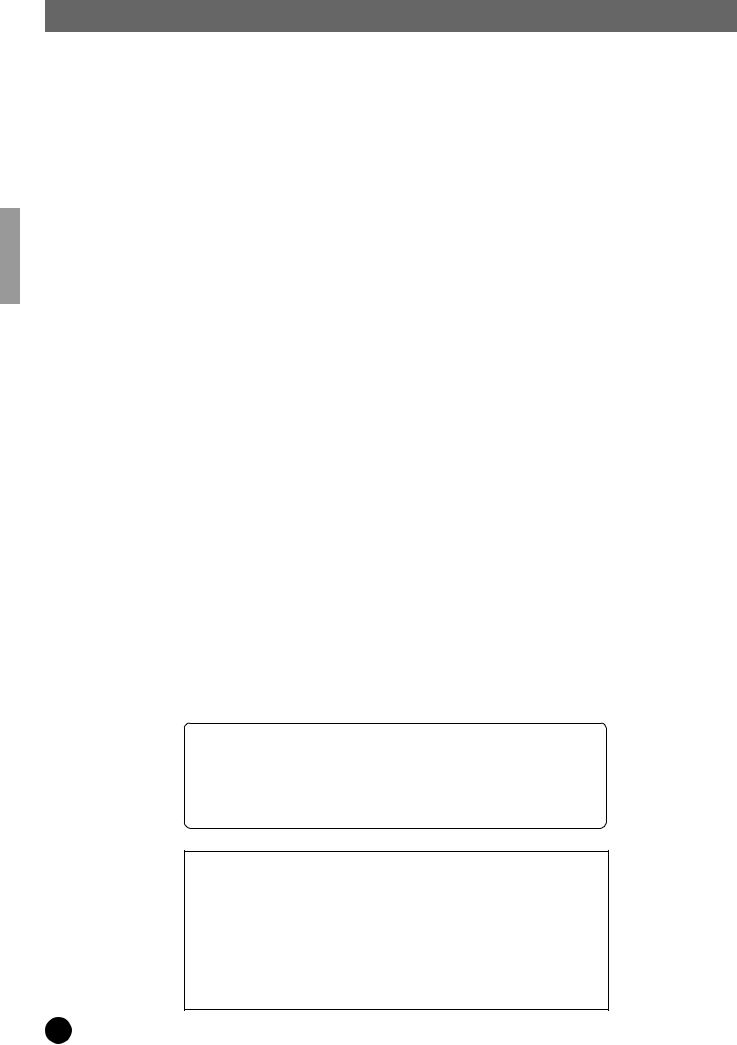
Introduction
Thank you for choosing a Yamaha Clavinova. Your Clavinova is a fine musical instrument that employs advanced Yamaha music technology. With the proper care, your Clavinova will give you many years of musical pleasure.
●The Clavinova CLP-950/930 digital piano offers unmatched sonic realism and natural grand-piano type playability with YamahaÕs original ÒAWM Dynamic Stereo SamplingÓ tone generation technology on the CLP-950 and ÒAWM Stereo SamplingÓ on the CLP-930 for rich, musical voices, and a special ÒGraded HammerÓ keyboard which provides graded key weight and response throughout the keyboard range. The grand piano voices feature totally new samples painstakingly recorded from a full concert grand piano.
The CLP-950 GRAND PIANO 1 voice features multiple velocity-switched samples (Dynamic Sampling), a ÒSoundboard ReverbÓ effect which accurately simulates the resonance of a piano soundboard, special ÒSustain SamplesÓ which recreate the unique resonance of an acoustic grand pianoÕs soundboard and strings when the damper pedal is pressed, and ÒKey-off SamplesÓ that add the subtle sound produced when the keys are released.
●Dual mode allows 2 voices to be played simultaneously.
●Split mode (CLP-950) allows different voices to be played by the left and right hands.
●Metronome feature with variable tempo facilitates practice.
●2-track digital recorder lets you record and play back anything you play on the keyboard.
●MIDI compatibility and a range of MIDI functions make the Clavinova useful in a range of advanced MIDI music systems.
●Built-in computer interface for direct connection to personal computers running advanced music software. The music stand can be removed to allow placement of a laptop-type personal computer or other equipment on top of the instrument.
In order to make the most of your ClavinovaÕs performance potential and features, we urge you to read this OwnerÕs Manual thoroughly, and keep it in a safe place for later reference.
*The models CLP-950M and CLP-950C will be referred to as the CLP-950 in this OwnerÕs Manual.
■ Trademarks
¥Apple and Macintosh are trademarks of Apple Computer, Inc., registered in the U.S. and other countries.
¥IBM-PC/AT is a trademark of International Business Machines Corporation.
¥Windows is the registered trademark of Microsoft¨ Corporation.
All other trademarks are the property of their respective holders.
Included Accessories
●OwnerÕs Manual
●Bench (included or optional depending on locale)
●Ò50 greats for the ClavinovaÓ Score Collection
ÒThe Clavinova-Computer ConnectionÓ is a supplementary guidebook that describes, for beginners, what you can do with your Clavinova and a personal computer and how to set up a Clavinova-Computer system (the manual is not written for any specific models). The document is available as a PDF file (in English) at the following Internet address:
Clavinova Home Page: http://www.yamaha.co.jp/english/product/cl/
Yamaha Manual Library (Electronic Musical Instruments) http://www2.yamaha.co.jp/manual/english/
4CLP-950/930
Downloaded from: http://www.usersmanualguide.com/

Contents
The Control Panel .......................................................... |
6 |
Connections ................................................................... |
8 |
Key Cover & Music Stand ............................................ |
10 |
Selecting & Playing Voices .......................................... |
11 |
Playing the Demonstration Tunes ................................ |
12 |
■ Voice Demo .............................................................. |
12 |
■ Preset Song ............................................................. |
13 |
■ Preset Song A-B Repeat ......................................... |
14 |
■ Preset Song Part Cancel ........................................ |
15 |
● Synchro Start ..................................................... |
15 |
● Left Pedal Start/Stop ......................................... |
15 |
The Dual Mode ............................................................ |
16 |
● Other Dual Mode Functions ............................... |
16 |
The Split Mode (CLP-950) ............................................... |
17 |
● Selecting the Right and Left Voices ................... |
17 |
● Setting the Split Point ........................................ |
17 |
● Other Split Mode Functions ............................... |
17 |
Reverb ........................................................................ |
18 |
● Adjusting Reverb Depth ..................................... |
18 |
The Effect .................................................................... |
19 |
● Adjusting Effect Depth ....................................... |
19 |
Brilliance (CLP-950) ........................................................ |
19 |
The Pedals ................................................................... |
20 |
● Damper (Right) Pedal ........................................ |
20 |
● Sostenuto (Center) Pedal .................................. |
20 |
● Soft (Left) Pedal ................................................. |
20 |
Touch Sensitivity ......................................................... |
21 |
Transposition ............................................................... |
21 |
Tuning ......................................................................... |
22 |
● Tuning Up ........................................................... |
22 |
● Tuning Down ...................................................... |
22 |
● To Restore Standard Pitch ................................. |
22 |
The Metronome & Tempo Control ................................ |
23 |
■ The Metronome ........................................................ |
23 |
● Metronome Time Signature ............................... |
23 |
● Metronome Volume Function ............................. |
23 |
■ Tempo Control ......................................................... |
23 |
Using the User Song Recorder ..................................... |
24 |
■ Recording ................................................................ |
24 |
● Changing the Initial Settings .............................. |
25 |
● Erasing a Single Track ....................................... |
25 |
■ Playback ................................................................... |
26 |
● Synchro Start ..................................................... |
26 |
● Left Pedal Start/Stop ......................................... |
26 |
The Function Mode ...................................................... |
27 |
● To Select a Function É ...................................... |
27 |
■ F1: Tuning ................................................................ |
28 |
■ F2: Scale .................................................................. |
28 |
F2.1: Scale ........................................................... |
28 |
F2.2: Base Note ................................................... |
28 |
■ F3: Dual Mode Functions ....................................... |
29 |
F3.1: Dual Balance ............................................... |
29 |
F3.2: Dual Detune ................................................ |
29 |
F3.3: 1st Voice Octave Shift ................................. |
29 |
Downloaded from: http://www.usersmanualguide.com/
F3.4: 2nd Voice Octave Shift ................................ |
29 |
F3.5: 1st Voice Effect Depth ................................. |
30 |
F3.6: 2nd Voice Effect Depth ................................ |
30 |
F3.7: Reset ........................................................... |
30 |
■ F4: CLP-950 Split Mode Functions ........................ |
30 |
F4.1: Split Point .................................................... |
30 |
F4.2: Split Balance ............................................... |
30 |
F4.3: Right Voice Octave Shift .............................. |
31 |
F4.4: Left Voice Octave Shift ................................ |
31 |
F4.5: Right Voice Effect Depth .............................. |
31 |
F4.6: Left Voice Effect Depth ................................ |
31 |
F4.7: Damper Range ............................................ |
31 |
F4.8: Reset ........................................................... |
31 |
■ F4: CLP-930 Left Pedal Mode ................................. |
31 |
■ F5: CLP-950 Pedal Functions ................................. |
32 |
F5.1: Left Pedal Mode .......................................... |
32 |
F5.2: Sustain Sample Depth ................................ |
32 |
■ F5: CLP-930 Metronome Volume ............................ |
32 |
■ F6: CLP-950 Metronome Volume ............................ |
32 |
■ F6: CLP-930 Preset Song Part Cancel Volume ..... |
32 |
■ F7: CLP-950 Preset Song Part Cancel Volume ..... |
32 |
■ F7: CLP-930 MIDI Functions ................................... |
33 |
■ F8: CLP-950 MIDI Functions ................................... |
33 |
● A Brief Introduction to MIDI ............................... |
33 |
F7.1/F8.1: MIDI Transmit Channel Selection ........ |
33 |
F7.2/F8.2: MIDI Receive Channel Selection ........ |
33 |
F7.3/F8.3: Local Control ON/OFF ........................ |
34 |
F7.4/F8.4: Program Change ON/OFF .................. |
34 |
F7.5/F8.5: Control Change ON/OFF .................... |
35 |
F7.6/F8.6: MIDI Transmit Transpose ..................... |
35 |
F7.7/F8.7: Panel/Status Transmit ......................... |
35 |
F7.8/F8.8: Bulk Data Dump .................................. |
35 |
■ F8: CLP-930 Backup Functions ............................. |
36 |
■ F9: CLP-950 Backup Functions ............................. |
36 |
F8.1/F9.1: Voice ................................................... |
36 |
F8.2/F9.2: MIDI .................................................... |
36 |
F8.3/F9.3: Tuning .................................................. |
36 |
F8.4/F9.4: Pedal ................................................... |
36 |
Connecting to a Personal Computer ............................. |
37 |
● Connecting to an Apple Macintosh Series Computer .... |
37 |
● Connecting to an IBM-PC/AT Series Computer ........ |
38 |
● Using a USB Interface (such as the Yamaha UX256) .... |
39 |
Factory Preset Recall .................................................. |
40 |
Troubleshooting ........................................................... |
40 |
Options & Expander Modules ...................................... |
40 |
Voice Descriptions ............................................................. |
41 |
Demo Song List .................................................................. |
42 |
Factory Setting List ............................................................ |
42 |
MIDI Data Format ................................................................ |
43 |
MIDI Implementation Chart ............................................... |
47 |
CLP-950: Keyboard Stand Assembly ............................... |
48 |
CLP-930: Keyboard Stand Assembly ............................... |
54 |
Specifications ..................................................................... |
60 |
CLP-950/930 |
5 |
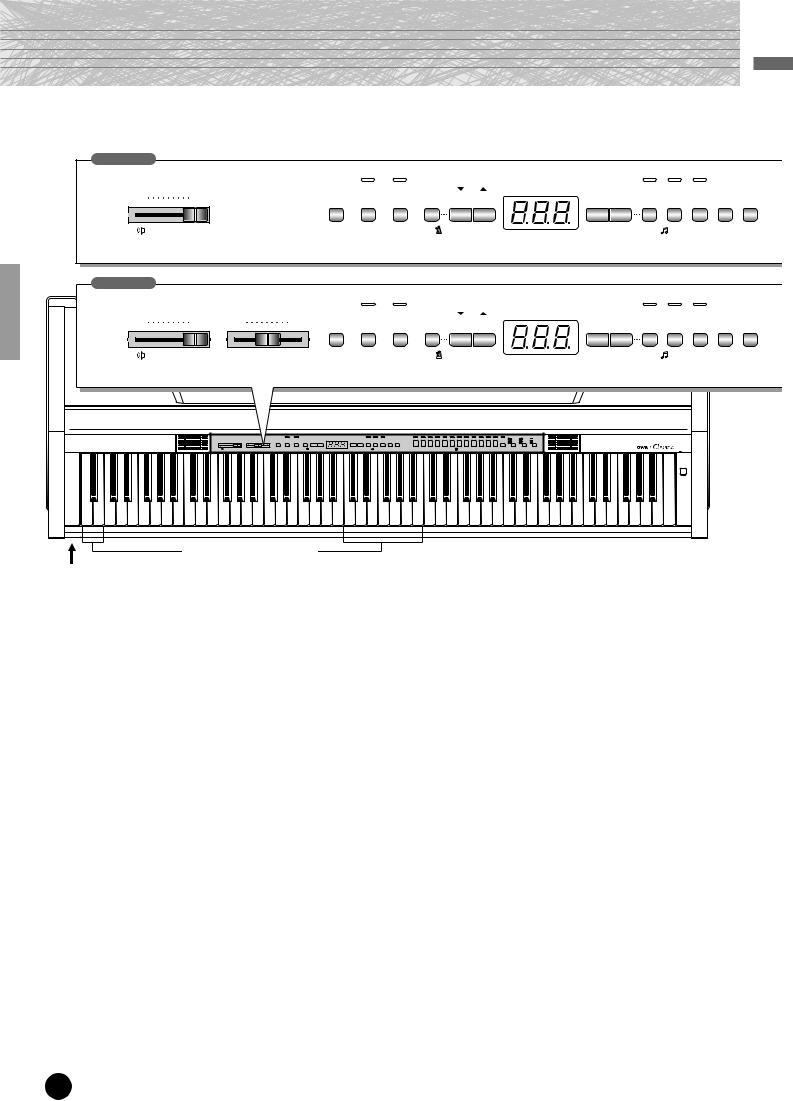
The Control Panel
CLP-930
CLP-930 |
|
|
|
ON |
ON |
START/ |
TEMPO/FUNCTION |
TEMPO/FUNCTION/SONG |
Ð/NO |
+/YES |
PRESET |
TRACK |
TRACK |
START/ |
REC |
|
|
|
|
|
|
STOP |
|
|
|
|
SONG |
1 |
2 |
STOP |
|
MIN |
MAX |
|
|
|
|
|
|
|
|
|
|
|
|
|
|
|
MASTER VOLUME |
|
DEMO TRANSPOSE |
FUNCTION |
|
METRONOME |
|
|
|
|
SONG |
|
|
|
|
|
2 |
|
4 |
5 6 |
7 |
8 |
|
9 |
0 |
! |
@ |
||||
CLP-950 |
|
|
|
|
|
|
|
|
|
|
|
|
|
|
|
CLP-950 |
|
|
|
ON |
ON |
START/ |
TEMPO/FUNCTION |
TEMPO/FUNCTION/SONG |
Ð/NO |
+/YES |
PRESET |
TRACK |
TRACK |
START/ |
REC |
|
|
|
|
|
|
STOP |
|
|
|
|
SONG |
1 |
2 |
STOP |
|
MIN |
MAX |
MELLOW |
BRIGHT |
|
|
|
|
|
|
|
|
|
|
|
|
|
MASTER VOLUME |
BRILLIANCE |
DEMO TRANSPOSE |
FUNCTION |
|
METRONOME |
|
|
|
|
SONG |
|
|
|
|
|
2 |
3 |
4 5 6 7 8 |
|
9 0 ! @ |
||||||||||
MASTER VOLUME BRILLIANCE DEMO TRANSPOSE FUNCTION METRONOME |
SONG |
VOICE |
REVERB EFFECT TOUCH |
|
|
|
POWER |
|
|
|
1 |
A-1 B-1 C0 D0 E0 F0 G0 A0 B0 C1 D1 E1 F1 G1 A1 B1 C2 D2 E2 F2 G2 A2 B2 C3 D3 E3 F3 G3 A3 B3 C4 D4 E4 F4 G4 A4 B4 C5 D5 E5 F5 G5 A5 B5 C6 D6 E6 F6 G6 A6 B6 C7 |
|||
Tuning keys (See page 22) |
|
|
CLP-950 |
PHONES jacks on bottom panel (see page 10)
1 [POWER] Switch
Press the [POWER] switch once to turn the power ON, a second time to turn the power OFF. When the power is initially turned ON, a voice selector LED will light, and the power indicator located below the left end of the keyboard will light.
2 [MASTER VOLUME] Control
The [MASTER VOLUME] control adjusts the volume (level) of sound produced by the ClavinovaÕs internal stereo sound system. The [MASTER VOLUME] control also adjusts headphone volume when a pair of headphones is plugged into the PHONES jack (page 10).
3 [BRILLIANCE] Control (CLP-950)
The [BRILLIANCE] Control adjusts the tonality or ÒtimbreÓ of the output sound from a mellow tone to a bright tone.
4 [DEMO] Button
Activates the demo playback mode in which you can select playback of different demonstration
6CLP-950/930
Downloaded from: http://www.usersmanualguide.com/
sequences for each of the ClavinovaÕs voices. See page 12 for details.
5 [TRANSPOSE] Button
The [TRANSPOSE] button allows access to the ClavinovaÕs TRANSPOSE function (to shift the pitch of the entire keyboard up or down in semitone intervals).
6 [FUNCTION] Button
This button accesses a range of utility functions Ñ including the MIDI functions Ñ that significantly enhance versatility and playability. See page 27 for details.
7 METRONOME [START/STOP] Button
Turns the metronome sound on and off. The
[TEMPO/FUNCTION ▼, ▲] buttons are used to set the tempo of the metronome sound. The [–/NO] and [+/YES] buttons are used to change the time signature (beat) of the metronome if used while the
METRONOME [START/STOP] button is held Ñ page 23.
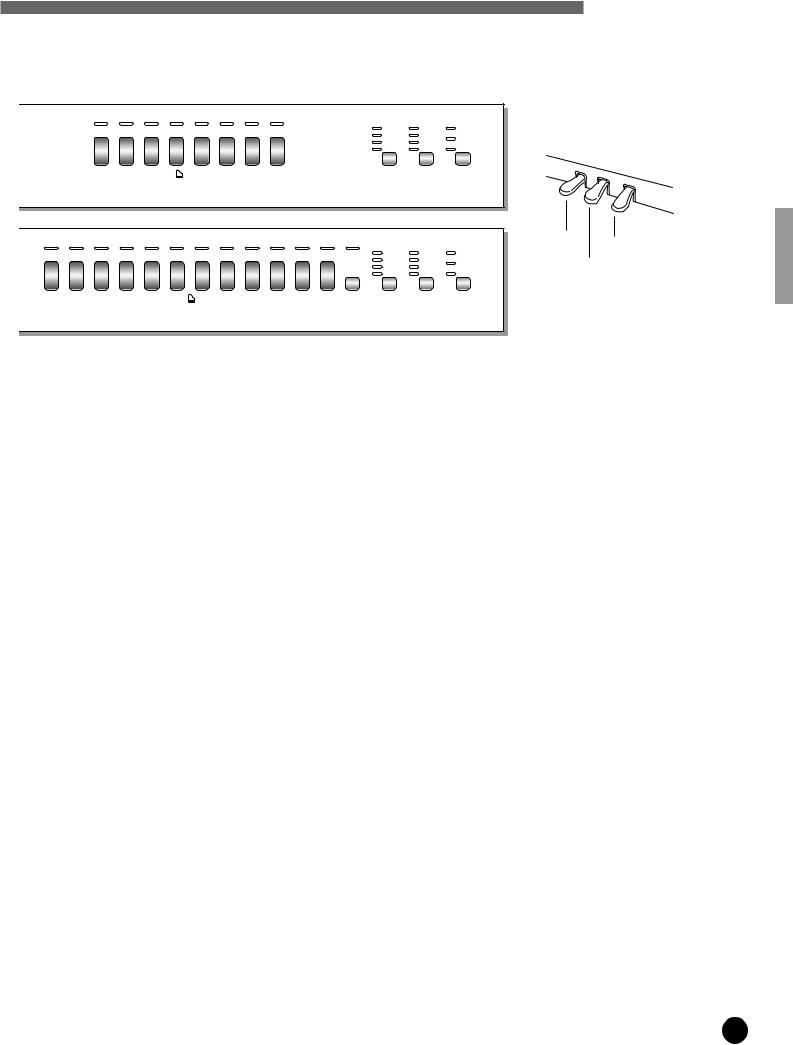
The Control Panel
|
|
GRAND E. PIANO E. PIANO HARPSI- |
VIBRA- |
CHURCH STRINGS |
CHOIR |
|
ROOM |
CHORUS |
HARD |
|
|
|||
|
|
PIANO |
1 |
2 |
CHORD |
PHONE |
ORGAN |
|
|
HALL 1 |
PHASER |
MEDIUM |
|
|
|
|
|
|
|
|
|
|
|
|
HALL 2 |
TREMOLO |
|
|
|
|
|
|
|
|
|
|
|
|
|
|
|
|
||
|
|
|
|
|
|
|
|
|
|
STAGE |
DELAY |
SOFT |
|
* |
|
|
|
|
|
|
|
|
|
|
|
|
|
|
|
|
|
|
|
|
VOICE |
|
|
|
REVERB |
EFFECT |
TOUCH |
|
|
|
|
|
|
|
|
# |
|
|
|
% |
^ |
& |
|
|
|
|
|
|
|
|
|
|
|
|
|
|
|
|
Soft pedal |
Damper pedal |
GRAND |
GRAND |
E. PIANO E. PIANO HARPSI- |
VIBRA- |
CHURCH |
JAZZ STRINGS |
CHOIR WOOD E. BASS |
SPLIT |
ROOM |
CHORUS |
HARD |
|
|||
|
|
|||||||||||||
PIANO 1 |
PIANO 2 |
1 |
2 |
CHORD |
PHONE |
ORGAN |
ORGAN |
BASS |
|
HALL 1 |
PHASER |
MEDIUM |
Sostenuto pedal |
|
|
|
|
|
|
|
|
|
|
|
HALL 2 |
TREMOLO |
|||
|
|
|
|
|
|
|
|
|
|
STAGE |
DELAY |
SOFT |
|
|
|
|
|
|
|
|
VOICE |
|
|
REVERB |
EFFECT |
TOUCH |
|
|
|
|
|
|
|
|
|
# |
|
|
$ |
% |
^ |
& |
|
|
8 [TEMPO/FUNCTION ▼, ▲] Buttons
These buttons adjust the tempo of the metronome function as well as the playback tempo of the recorder function. The tempo range is from 32 to 280 beats per minute Ñ page 23. These same buttons are also used to select functions Ñ page 27.
9 [Ð/NO], [+/YES] Buttons
These buttons select a preset song number for playback, and are also used to adjust a range of other parameters.
0 [PRESET SONG] Button
This button enters the preset song mode. While in this mode you can use the [–/NO] and [+/YES] buttons to select from 50 songs.
! TRACK [1] and [2] Buttons
The Clavinova has a 2-track recorder, and these buttons are used to select the track(s) to be recorded or played back. See page 24 for details.
@ SONG [START/STOP] and [REC] Buttons
These buttons control the ClavinovaÕs user song recorder, letting you record and play back just about anything you play on the keyboard.
# Voice Selectors
Simply press any of the voice selectors to select the corresponding voice. The voice selector LED will light to indicate which voice is currently selected.
There is also a dual mode in which two voices can be played simultaneously across the full range of the keyboard (see page 16 for details), and a split mode on the CLP-950 which allows different voices to be played by the left and right hands (see page 17 for details).
$ [SPLIT] Button (CLP-950)
Engages the split mode, in which different voices can be played on the leftand right-hand sections of the keyboard. See page 17 for details.
% [REVERB] Button
The [REVERB] button selects a number of digital reverb effects that you can use for extra depth and expressive power. See page 18 for details.
^ [EFFECT] Button
This button selects a number of effects which can give your sound greater depth and animation.
& [TOUCH] Button
The [TOUCH] button makes it easy to adjust the touch response of the Clavinova to match your playing style. See page 21 for details.
* Pedals
The soft (left), sostenuto (center) and damper (right) pedals provide a range of expressive control capabilities similar to the pedal functions on an acoustic piano. See page 20 for details.
CLP-950/930 7
Downloaded from: http://www.usersmanualguide.com/
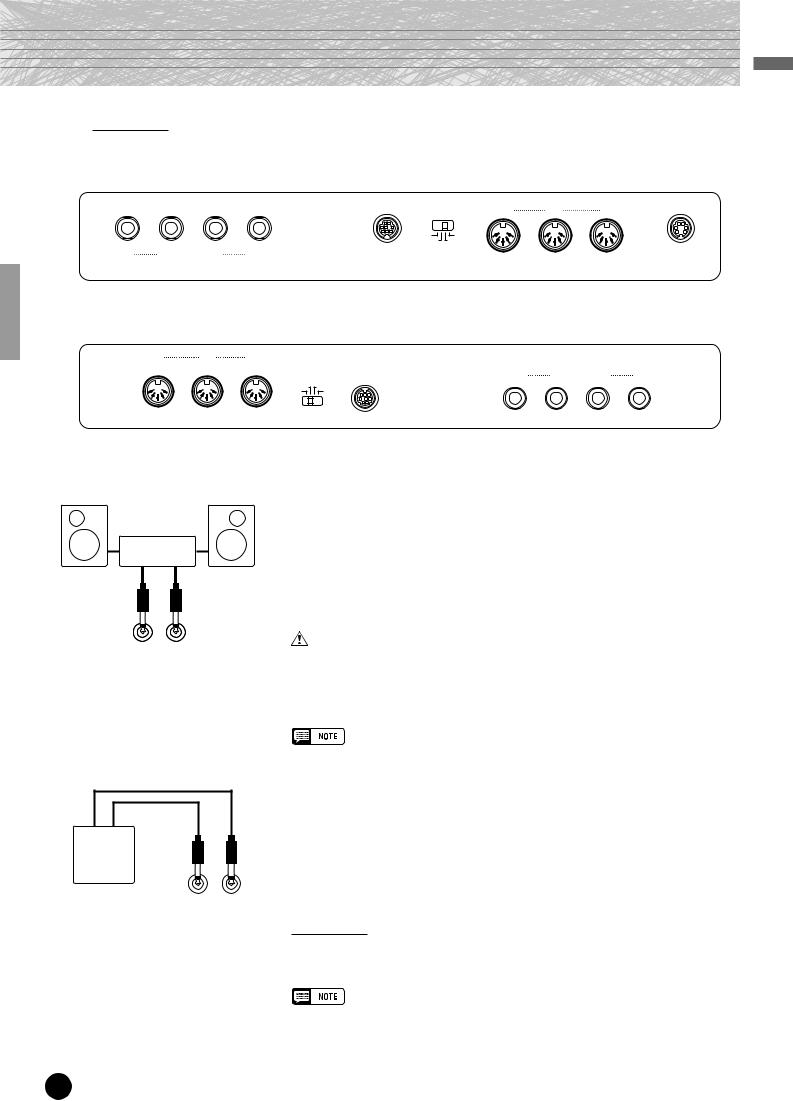
Connections
 CAUTION ¥ Before connecting the Clavinova to other electronic components, turn off the power for all components. Before turning the power on or off for all components, set all-volume levels to minimum.
CAUTION ¥ Before connecting the Clavinova to other electronic components, turn off the power for all components. Before turning the power on or off for all components, set all-volume levels to minimum.
CLP-930 Bottom Panel
|
|
|
|
|
|
MIDI |
|
|
|
|
|
|
|
THRU |
OUT |
IN |
|
|
|
|
|
Mac |
MIDI |
|
|
|
|
|
|
|
PC-1 |
PC-2 |
|
|
|
R |
L/L+R |
R |
L/L+R |
|
|
|
|
|
|
AUX OUT |
|
AUX IN |
TO HOST HOST SELECT |
|
|
PEDAL |
|
|
1 |
|
2 |
3 |
|
4 |
|
5 |
CLP-950 Bottom Panel |
|
|
|
|
|
|||
|
IN |
OUT |
THRU |
|
|
|
|
|
|
|
|
|
|
L/L+R |
R |
L/L+R |
R |
|
|
|
PC-2 PC-1 |
|
|
|
|
|
|
|
|
MIDI Mac |
|
|
|
|
|
|
|
MIDI |
HOST SELECT |
TO HOST |
|
AUX IN |
AUX OUT |
|
|
|
4 |
3 |
|
|
2 |
1 |
|
Stereo System
1 AUX OUT L/L+R and R Jacks
The AUX OUT L/L+R and R jacks deliver the output of the Clavinova for connection to an instrument amplifier, mixing console, PA system, or recording equipment. If you will be connecting the Clavinova to a monaural sound system, use only the L/L+R jack. When a plug is inserted into the L/ L+R jack only, the leftand right-channel signals are combined and delivered via the L/L+R jack so you donÕt lose any of the ClavinovaÕs sound.
R







 L/L+R
L/L+R
AUX OUT
|
|
CAUTION |
||
CLP-930 |
|
|
|
|
¥ |
When the ClavinovaÕs AUX OUT jacks are connected to an external sound system, |
|||
|
||||
|
|
first turn the Clavinova power on, and then the power to the external amplifier/ |
||
|
|
speaker system. Reverse this order when turning the power off. |
||
|
¥ |
The AUX OUT jack signal must never be returned to the AUX IN jacks, either directly |
||
|
|
or through external equipment. |
||
¥The AUX OUT jack signal is not controlled by the ClavinovaÕs volume or brilliance (CLP-950) control. Use the volume control on the external audio equipment to adjust the level.
DOU-10
R 







 L/L+R
L/L+R
AUX IN
CLP-930
8CLP-950/930
2 AUX IN L/L+R and R Jacks
These jacks are intended for use with an external tone generator module such as the Yamaha DOU-10 Disk Orchestra Unit. The stereo outputs from the external tone generator module are connected to the AUX IN L/L+R and R jacks, allowing the sound of the tone generator to be reproduced via the ClavinovaÕs internal sound system and speakers. A line-level mono source can be connected to the L/L+R jack.
 CAUTION
CAUTION
¥When the ClavinovaÕs AUX IN jacks are connected to an external source, first turn the power to the external device on, and then the power to the Clavinova. Reverse this order when turning the power off.
¥ The input signal from the AUX IN jacks is controlled by the ClavinovaÕs volume and brilliance (CLP-950) controls. Reverb and effect functions will have no affect.
¥ The input signal from the AUX IN jacks is delivered to the AUX OUT jacks.
Downloaded from: http://www.usersmanualguide.com/

Personal Computer
|
Mac |
MIDI |
|
|
PC-1 PC-2 |
|
|
TO HOST |
HOST SELECT |
CLP-930 |
|
|
MIDI |
|
|
THRU |
OUT |
|
IN |
Tone Generator
DOU-10
CLP-930
Connections
3 TO HOST Connector & HOST SELECT Switch
This jack and selector switch allow direct connection to a personal computer for sequencing and other music applications Ñ without the need for a separate MIDI interface. See page 37 for details.
4 MIDI IN, THRU and OUT Connectors
The MIDI IN connector receives MIDI data from an external MIDI device (such as the DOU-10 Disk Orchestra Unit) which can be used to control the Clavinova. The MIDI THRU connector retransmits any data received at the MIDI IN connector, allowing ÒchainingÓ of several MIDI instruments or other devices. The MIDI OUT connector transmits MIDI data generated by the Clavinova (e.g. note and velocity data produced by playing the Clavinova keyboard).
More details on MIDI are given in ÒMIDI FunctionsÓ on page 33.
5 PEDAL Jack (CLP-930)
This terminal is for connecting the pedal cord from the pedal box (refer to the ÒKeyboard Stand AssemblyÓ on pages 55-59).
● PHONES Jacks
Two sets of standard stereo headphones can be plugged in here for private practice or late-night playing. The internal speaker system is automatically shut off when a pair of headphones is plugged into either of the PHONES jacks.
CLP-950/930 9
Downloaded from: http://www.usersmanualguide.com/

Key Cover & Music Stand
Key Cover
To open the key cover:
Be careful to avoid catching your fingers when opening or closing the cover.
Z Lift the cover slightly.
X Slide the cover open.
To close the key cover:
Z Slide the cover toward you.
X Gently lower the cover over the keys.
CLP-930
 CAUTION
CAUTION
¥Hold the cover with both hands when moving it, and do not release it until it is fully opened or closed. Be careful to avoid catching fingers (yours or others) between the cover and main unit.
¥Do not place objects on top of the key cover. Small objects placed on the key cover may fall inside the main unit when the cover is opened and may not be able to be removed. This could cause electric shock, short circuit, fire or other serious damage to the instrument.
Music Stand
The Clavinova is supplied with a music stand that can be attached to the instrument by inserting it into the holes at the top of panel.
NOTE ¥ The music stand can be removed to allow placement of a laptop-type personal computer or other equipment on top of the instrument.
CLP-930
10 CLP-950/930
Downloaded from: http://www.usersmanualguide.com/
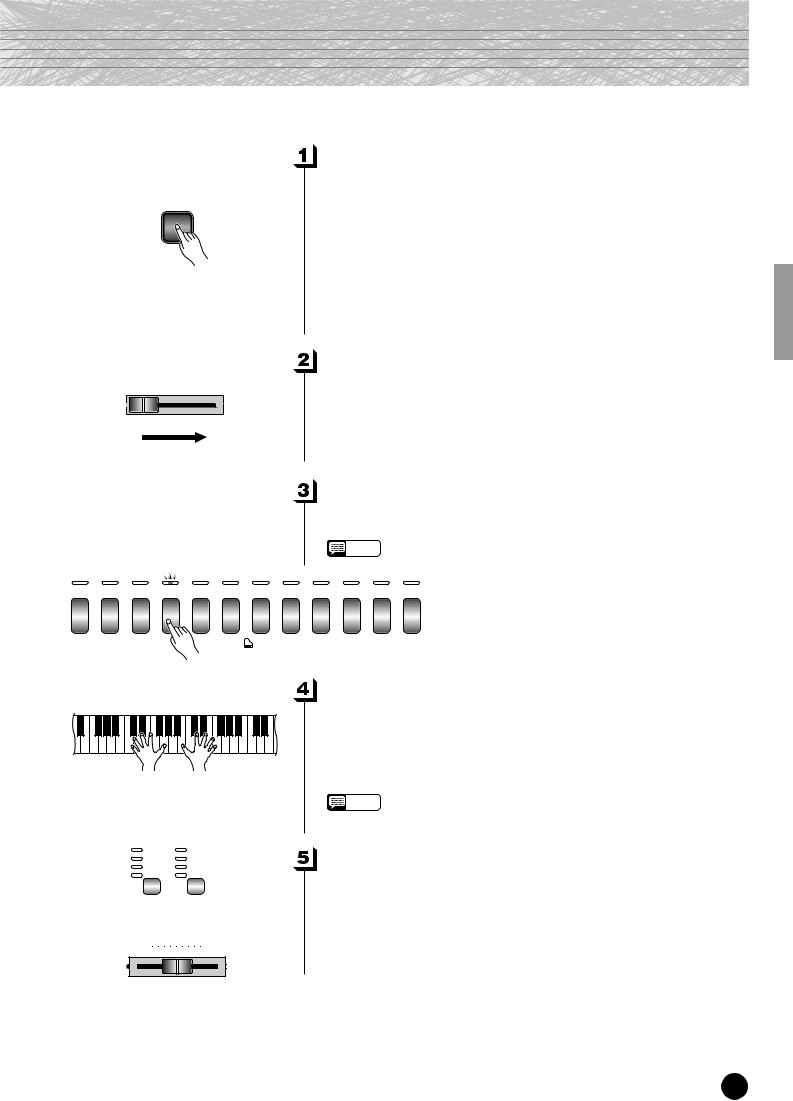
Selecting & Playing Voices
 POWER
POWER
MIN 







 MAX
MAX
 MASTER VOLUME
MASTER VOLUME
CLP-950
Turn Power On...................................................................................................
After making sure that the ClavinovaÕs AC cord is properly plugged into the Clavinova itself and plugged into a convenient AC wall outlet, press the [POWER] switch located to the right of the keyboard to turn the power ON. In some areas a plug adaptor may be provided to match the pin configuration of the AC wall outlets in your area.
When the power is turned ON, one of the voice selector LEDs will light, and the power indicator located below the left end of the keyboard will light.
Set the Volume ..................................................................................................
Initially set the [MASTER VOLUME] control about half way between the ÒMINÓ and ÒMAXÓ settings. Then, when you start playing, re-adjust the [MASTER VOLUME] control for the most comfortable listening level.
Select a Voice .....................................................................................................
Select the desired voice by pressing one of the voice selectors.
NOTE ¥ See ÒVoice DescriptionsÓ on page 41.
GRAND |
GRAND |
E. PIANO E. PIANO HARPSI- |
VIBRA- |
CHURCH |
JAZZ STRINGS CHOIR |
WOOD E. BASS |
||
PIANO 1 |
PIANO 2 |
1 |
2 |
CHORD |
PHONE |
ORGAN |
ORGAN |
BASS |
VOICE
Play ................................................................................................................................
The Clavinova also offers keyboard touch response, so the volume and timbre of notes played can be controlled according to how ÒhardÓ you play the keys. The amount of variation available depends on the selected voice.
NOTE ¥ Some voices do not have keyboard touch response. See ÒVoice DescriptionsÓ on page 41 for details.
ROOM |
CHORUS |
HALL 1 |
PHASER |
HALL 2 |
TREMOLO |
STAGE |
DELAY |
REVERB |
EFFECT |
MELLOW |
BRIGHT |
Add Effects As Required .......................................................................
You can add or change reverb, effects and brilliance (CLP-950) as desired by using the [REVERB] button (page 18), [EFFECT] button (page 19) and the [BRILLIANCE] control (page 19).
BRILLIANCE
CLP-950/930 11
Downloaded from: http://www.usersmanualguide.com/
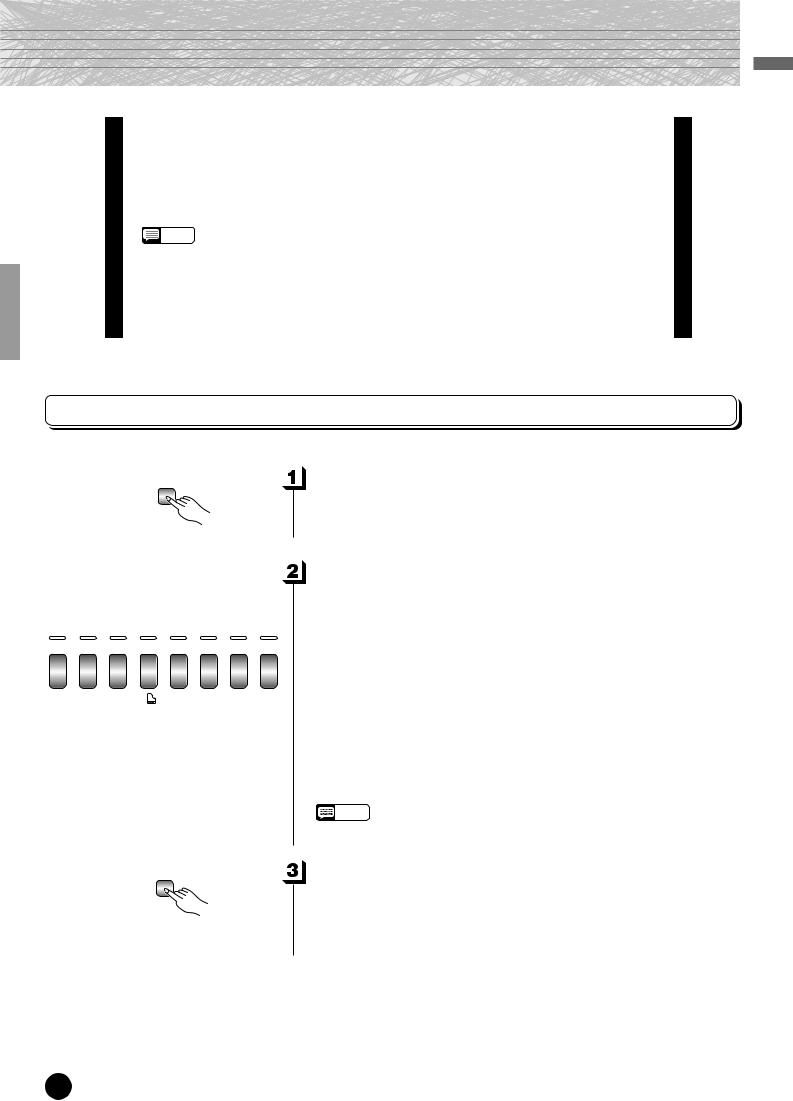
Playing the Demonstration Tunes
Demonstration tunes are provided that effectively demonstrate each of the ClavinovaÕs voices. There are also 50 preset songs that you can play individually, all in sequence, or in random order. The Ò50 greats for the ClavinovaÓ score collection provided with the Clavinova includes the written scores for all 50 preset songs. HereÕs how you can select and play the demo tunes.
NOTE ¥ The demo or preset song mode cannot be engaged while a user song recorder (page 24) is in use.
¥No MIDI reception occurs in the demo/preset song mode.
¥The demo/preset song data is not transmitted via the MIDI connectors.
*See page 42 for a complete listing of the demo tunes.
DEMO
CLP-930
GRAND |
E. PIANO E. PIANO HARPSI- |
VIBRA- |
CHURCH STRINGS CHOIR |
||
PIANO |
1 |
2 |
CHORD |
PHONE |
ORGAN |
VOICE
DEMO
Voice Demo
Engage the Demo Mode .........................................................................
Press the [DEMO] button to engage the demo mode Ñ the voice selector indicators will flash in sequence.
Play a Voice Demo .........................................................................................
Press one of the voice selectors to start playback of all songs starting from the corresponding voice demo tune Ñ featuring the voice normally selected by that voice selector button. (If you press the SONG [START/STOP] button instead of a voice selector button, the GRAND PIANO 1 (GRAND PIANO: CLP-930) demo tune will begin playback.) The indicator of the selected voice selector button will flash during playback, and Ò- - -Ó will appear on the LED display. You can start playback of any other voice demo tune during playback by simply pressing the corresponding voice selector. You can stop playback at any time by pressing the SONG [START/STOP] button or the voice selector of the currently playing demo.
NOTE ¥ Use the [MASTER VOLUME] control to adjust the volume and the [BRILLIANCE] control (CLP-950) to adjust the brilliance (page 19).
Exit From the Demo Mode....................................................................
Press the [DEMO] button to exit from the demo mode and return to the normal play mode.
12 CLP-950/930
Downloaded from: http://www.usersmanualguide.com/
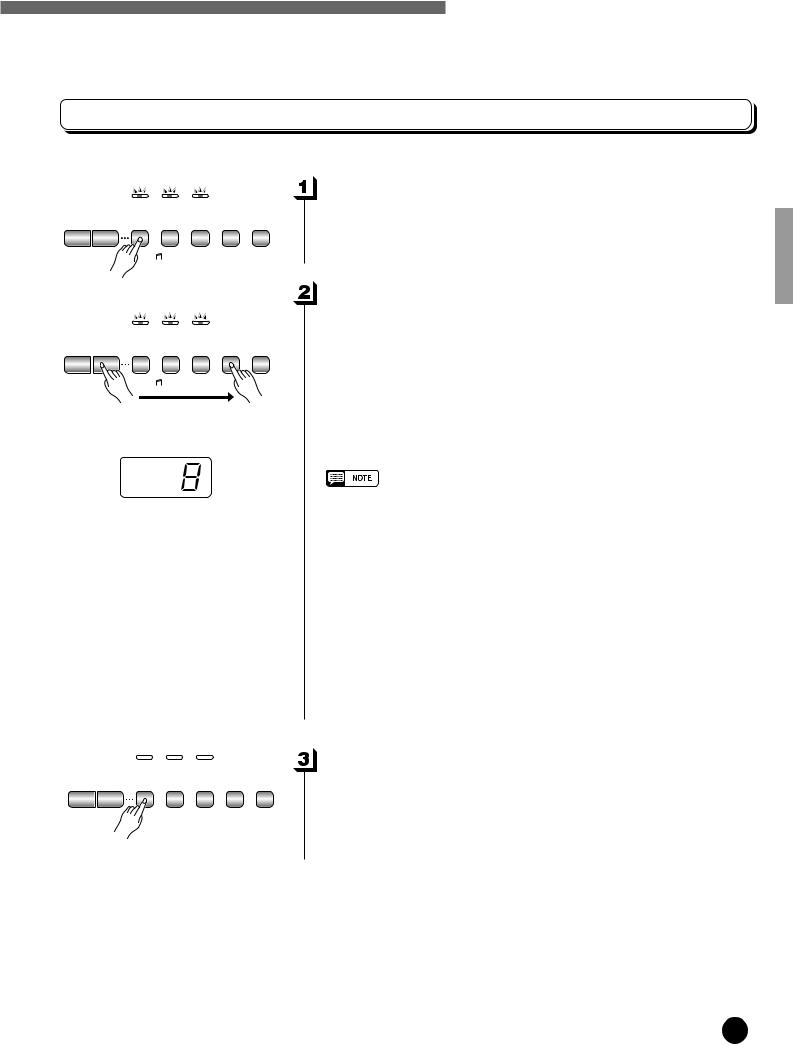
Ð/NO +/YES PRESET |
TRACK |
TRACK |
START/ REC |
SONG |
1 |
2 |
STOP |
 SONG
SONG
Ð/NO +/YES PRESET |
TRACK |
TRACK |
START/ REC |
SONG |
1 |
2 |
STOP |
 SONG
SONG
TEMPO/FUNCTION/SONG
Ð/NO +/YES PRESET |
TRACK |
TRACK |
START/ REC |
SONG |
1 |
2 |
STOP |
 SONG
SONG
Playing the Demonstration Tunes
Preset Song
Engage the Preset Song Mode .......................................................
Press the [PRESET SONG] button to engage the preset song mode Ñ the [PRESET SONG], TRACK [1] and [2] indicators will light.
Play a Preset Song .......................................................................................
To play any of the 50 preset songs provided, use the [–/NO], [+/YES] buttons to select the number of the tune you want to play (the number will appear on the LED display), then press the SONG [START/STOP] button. Playback will stop automatically when playback of the selected preset song has finished.
Select ÒALLÓ instead of a number to play all preset songs in sequence, or select ÒRNDÓ to continuously play all preset songs in random order. Press the SONG [START/STOP] button to stop playback.
¥ Use the [MASTER VOLUME] control to adjust the volume.
¥You can use the [TEMPO/FUNCTION ▼,▲] buttons to adjust the playback tempo as required. This produces a relative tempo variation,
with a range from Ò-50Ó through Ò- - -Ó to Ò50Ó at maximum; the range will differ depending on the selected song.
¥The default tempo Ò- - -Ó is automatically selected whenever a new preset song is selected, or playback of a new preset song begins during ÒALLÓ or ÒRNDÓ playback.
¥You can play the keyboard along with the preset song playback. The voice playing on the keyboard can be changed.
¥You can change the Brilliance control (CLP-950) and Reverb type that is applied to the voice you play on the keyboard and for the preset song playback. You can change the Effect type and Touch sensitivity that is applied to the voice you play on the keyboard. When a new preset song is selected or a new preset song is automatically started in continuous play, the HALL 1 reverb type will automatically be selected.
Exit From the Preset Song Mode..................................................
Press the [PRESET SONG] button to exit from the preset song mode, the indicator will go off, and return to the normal play mode.
CLP-950/930 13
Downloaded from: http://www.usersmanualguide.com/
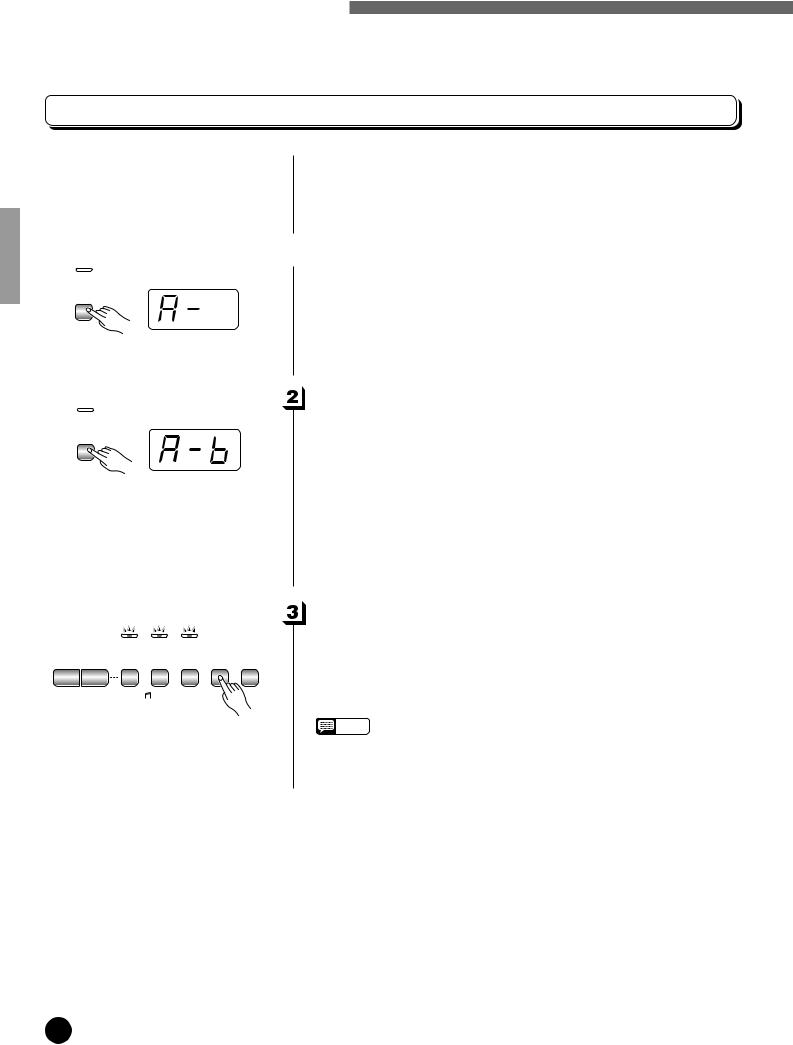
Playing the Demonstration Tunes
Preset Song A-B Repeat
The A-B Repeat function can be used to continuously repeat a specified phrase within a preset song. Combined with the Part Cancel function described below, this provides an excellent way to practice difficult phrases.
 Specify the Beginning (A) of the Phrase ..............................
Specify the Beginning (A) of the Phrase ..............................
ON |
TEMPO/FUNCTION/SONG |
|
|
Select and play a preset song, then press the [FUNCTION] button |
|
|
at the beginning of the phrase you want to repeat. This sets the ÒAÓ |
|
FUNCTION |
point (ÒA-Ó will appear on the display). |
|
To set the ÒAÓ point at the very beginning of the song, press the |
||
|
||
|
[FUNCTION] button before starting playback. |
|
|
Specify the End (B) of the Phrase ............................................... |
ON |
TEMPO/FUNCTION/SONG |
FUNCTION
Press the [FUNCTION] button a second time at the end of the phrase. This sets the ÒBÓ point (ÒA-BÓ will appear on the display). At this point repeat playback will begin between the specified A and B points. The metronome will sound when playback begins to give you a tempo reference. However, if playback repeats from the beginning of the song, there will be no tempo reference from metronome.
To set the B point at the songÕs end, press the [FUNCTION] button after song playback is complete and before ÒA- Ó disappears from the display.
Ð/NO +/YES PRESET |
TRACK |
TRACK |
START/ REC |
SONG |
1 |
2 |
STOP |
 SONG
SONG
Stop Playback ....................................................................................................
Press the SONG [START/STOP] button to stop playback while retaining the specified A and B points. A-B repeat playback will resume if the SONG [START/STOP] button is then pressed again.
To cancel the A and B points press the [FUNCTION] button once.
NOTE ¥ The A and B points are automatically canceled when a new song is selected.
¥ The A-B Repeat function cannot be used during ÒALLÓ or ÒRNDÓ playback.
14 CLP-950/930
Downloaded from: http://www.usersmanualguide.com/
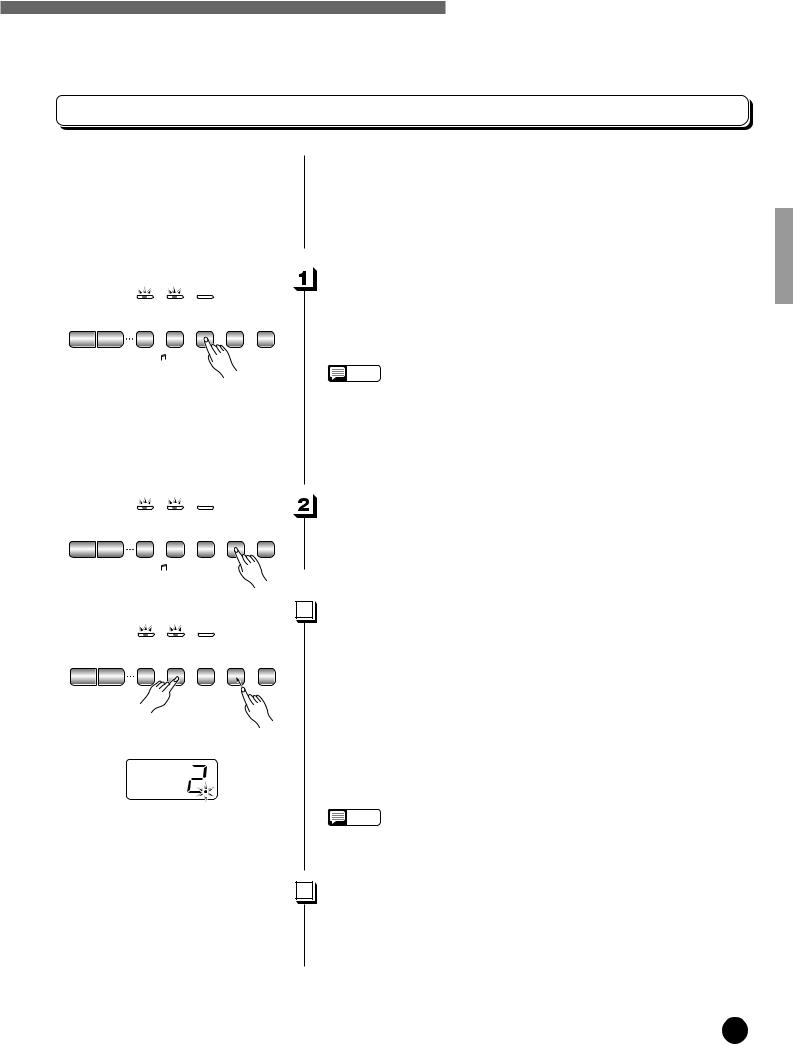
Playing the Demonstration Tunes
Preset Song Part Cancel
Ð/NO +/YES PRESET |
TRACK |
TRACK |
START/ REC |
SONG |
1 |
2 |
STOP |
 SONG
SONG
Ð/NO +/YES PRESET |
TRACK |
TRACK |
START/ REC |
SONG |
1 |
2 |
STOP |
 SONG
SONG
Ð/NO +/YES PRESET |
TRACK |
TRACK |
START/ REC |
SONG |
1 |
2 |
STOP |
 SONG
SONG
TEMPO/FUNCTION/SONG
The 50 preset songs have separate leftand right-hand parts that can be turned on and off as required so you can practice the corresponding part on the keyboard. The right-hand part is played by TRACK [1] track, and the left-hand part is played by TRACK [2] track.
Turn the Desired Part Off .......................................................................
Press the TRACK [1] or [2] button to turn the corresponding part off Ñ the corresponding indicator will go out (these buttons alternately toggle the corresponding part on and off).
NOTE ¥ The parts can be turned on or off even during playback.
¥The Preset Song Part Cancel function cannot be used during ÒALLÓ or ÒRNDÓ playback.
¥The ÒPreset Song Part Cancel VolumeÓ function described on page 32 can be used to set the canceled part so that it plays at a volume from Ò0Ó (no sound) to Ò20Ó. The default setting is Ò5Ó.
¥Both parts are automatically turned ON whenever a new song is selected.
Start/Stop Playback .....................................................................................
Press the SONG [START/STOP] button to start and stop playback as required.
Synchro Start .....................................................................................................
When the Synchro Start function is engaged, playback of the selected preset song will begin automatically as soon as you start playing on the keyboard.
To engage the Synchro Start function press the SONG [START/ STOP] button while holding the part button corresponding to the part which is ON. A dot will appear in the lower right corner of the display. (Repeat the previous operation to disengage the Syncro Start function.) Playback will then start as soon as you begin playing on the key-
board.
NOTE ¥ If you hold a track button which is OFF while pressing the SONG [START/ STOP] button, that track will be turned ON and the Synchro Start mode will be engaged.
Left Pedal Start/Stop ..................................................................................
The left pedal can be assigned to start and stop preset song playback via the ÒLeft Pedal ModeÓ function described on pages 31 (CLP-930) and 32 (CLP-950).
CLP-950/930 15
Downloaded from: http://www.usersmanualguide.com/
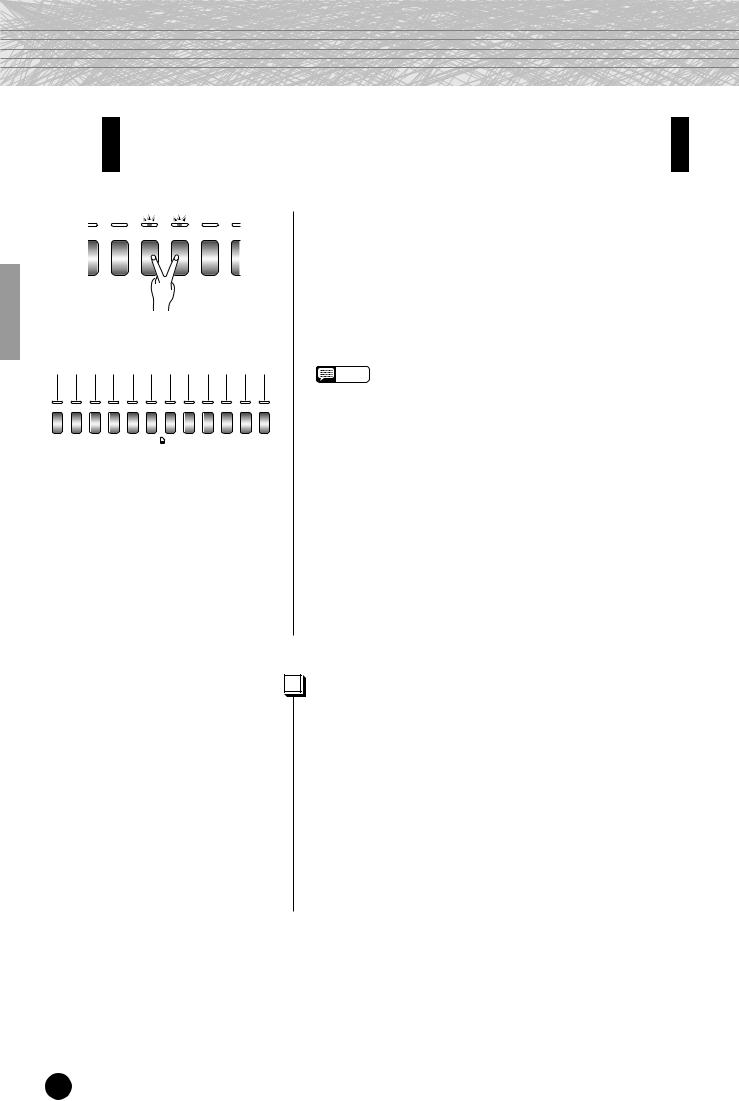
The Dual Mode
The dual mode makes it possible to play two voices simultaneously across the entire range of the keyboard.
AND |
E. PIANO E. PIANO HARPSI- |
VIBRA- |
CHU |
||
NO 2 |
1 |
2 |
CHORD |
PHONE |
ORG |
Voice numbering priority
1 |
2 |
3 |
4 |
5 |
6 |
7 |
8 |
9 |
10 |
11 |
12 |
GRAND |
GRAND |
E. PIANO E. PIANO HARPSIVIBRACHURCH |
JAZZ |
STRINGS CHOIR |
WOOD |
E. BASS |
|||||
PIANO 1 |
PIANO 2 |
1 |
2 |
CHORD PHONE ORGAN |
ORGAN |
|
|
BASS |
|
||
VOICE
CLP-950
To activate the dual mode simply press two voice selectors at the same time (or press one voice selector while holding another). The voice indicators of both selected voices will light when the dual mode is active. To return to the normal single-voice play mode, press any single voice selector.
According to the voice numbering priority as shown in the diagram on the left, lower valued voice numbers will be designated as the 1st Voice (the other voice will be designated as the 2nd Voice).
NOTE ¥ The dual and split modes (CLP-950) cannot be engaged at the same time.
¥[EFFECT] in the Dual Mode
Depending upon the conditions one effect type will take priority over the other. Depth will be decided according to the depth default value of the voice combination. However, using function F3 (see page 29) you can change the depth value for each voice as you like.
Effect depth setting via the panel controls (i.e. pressing the [-/NO] or [+/ YES] buttons while holding the [EFFECT] button Ñ see page 19) will be applied to the 1st Voice only.
¥[REVERB] in the Dual Mode
The reverb type assigned to the 1st Voice will take priority over the other.
(If the reverb is set to OFF, the 2nd VoiceÕs reverb type will be in affect.)
Reverb depth setting via the panel controls (i.e. pressing the [-/NO] or [+/ YES] buttons while holding the [REVERB] button Ñ see page 18) will be applied to the 1st Voice only.
Other Dual Mode Functions ...............................................................
The Clavinova Function mode provides access to a number of other dual-mode functions, listed below. See the corresponding pages for details.
¥ Dual Balance ................................................. |
29 |
¥ Dual Detune .................................................. |
29 |
¥ 1st Voice Octave Shift ................................... |
29 |
¥ 2nd Voice Octave Shift .................................. |
29 |
¥ 1st Voice Effect Depth ................................... |
30 |
¥ 2nd Voice Effect Depth .................................. |
30 |
¥ Reset ............................................................. |
30 |
16 CLP-950/930
Downloaded from: http://www.usersmanualguide.com/
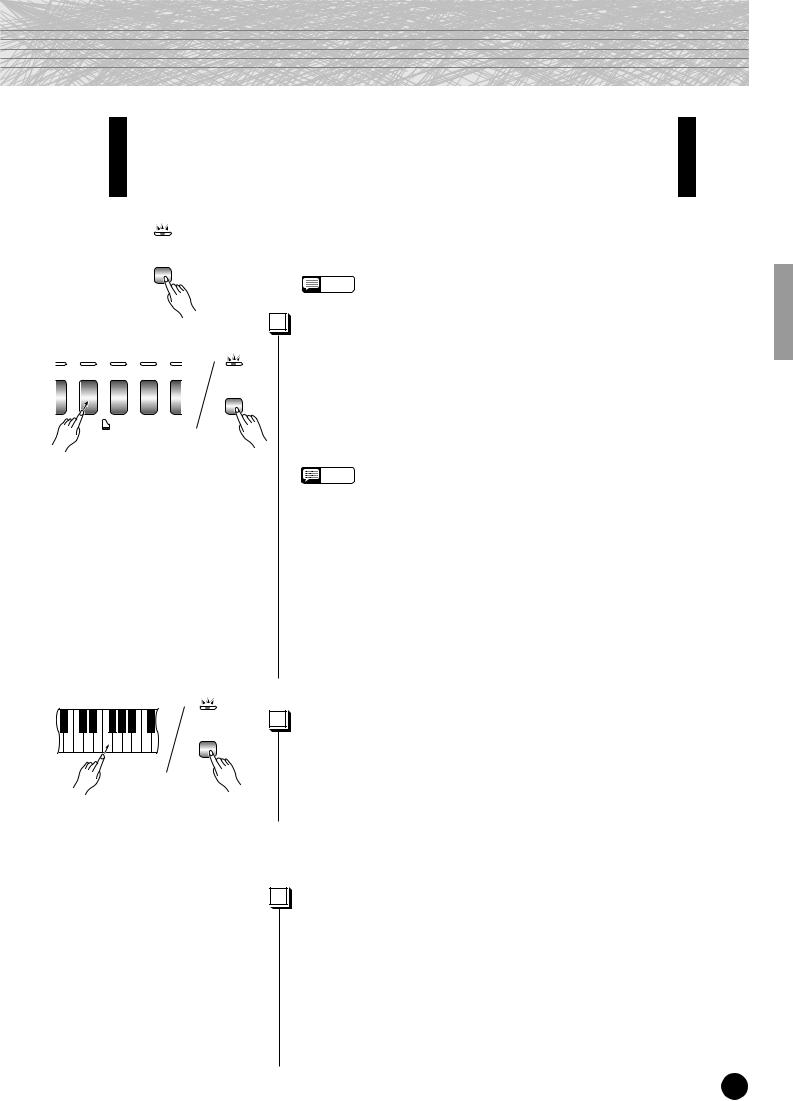
The Split Mode (CLP-950)
The split mode makes it possible to play two different voices on the keyboard Ñ one with the left hand and another with the right hand. The Left Voice is played on all keys to the left of (and including) a specified Òsplit pointÓ key, while the Right Voice is played on all keys to the right of the split point key.
|
|
|
To activate the split mode simply press the [SPLIT] button so that its |
|
|
||
SPLIT |
|
indicator lights. The split mode can be turned off at any time by pressing the |
|
|
|
|
[SPLIT] button again so that its indicator goes out. |
|
|
|
NOTE ¥ The dual and split modes cannot be engaged at the same time. |
|
|
|
Selecting the Right and Left Voices |
|
|
|
|
|
|
|
|
|
|
|
|
RPSIVIBRACHURCH |
JAZZ STRIN |
SPLIT |
ORD PHONE ORGAN |
ORGAN |
|
VOICE
SPLIT
Example:
A-1 |
B=1 |
C 2 |
F~2 |
|
|
|
|
A-1 |
BB-1 |
C2 |
F#2 |
|
|
|
|
¥ÒBÓ is indicated with a lower Ò_Ó.
¥Ò#Ó is indicated with an upper Ò~Ó.
The voice that was selected before the split mode was engaged becomes the Right Voice in the split mode. (The Right Voice can also be changed while in the split mode, by simply pressing the corresponding voice selector.)
To select a Left Voice press the corresponding voice selector while holding the [SPLIT] button (default: [WOOD BASS]). The indicator of the Left Voice selector will light while the [SPLIT] button is pressed, then only the Right Voice selector and [SPLIT] button indicators will remain lit.
NOTE ¥ [EFFECT] in the Split Mode
Depending upon the conditions, one effect type will take priority over the other. Depth will be decided according to the depth default value of the voice combination. However, using function F4 (see page 30) you can change the depth value for each voice as you like.
Effect depth setting via the panel controls (i.e. pressing the [-/NO] or [+/YES] buttons while holding the [EFFECT] button Ñ see page 19) will be applied to the Right Voice only.
¥[REVERB] in the Split Mode
The reverb type assigned to the Right Voice will take priority over the other. (If the reverb is set to OFF, the Left VoiceÕs reverb type will be in affect.)
Reverb depth setting via the panel controls (i.e. pressing the [-/NO] or [+/YES] buttons while holding the [REVERB] button Ñ see page 18) will be applied to the Right Voice only.
Setting the Split Point .........................................................................................
The split point is initially set at the F#2 key by default. You can change the split point to any other key by pressing the key while holding the [SPLIT] button (the name of the current split-point key appears on the LED display while the [SPLIT] button is held). The split point can also be set via the Function mode (see below).
Other Split Mode Functions .........................................................................
The Clavinova Function mode provides access to a number of other split-mode functions, listed below. See the corresponding pages for details.
¥ |
Split Point ...................................................... |
30 |
¥ |
Split Balance ................................................. |
30 |
¥ |
Right Voice Octave Shift ................................ |
31 |
¥ |
Left Voice Octave Shift .................................. |
31 |
¥ |
Right Voice Effect Depth ................................ |
31 |
¥ |
Left Voice Effect Depth .................................. |
31 |
¥ |
Damper Range .............................................. |
31 |
¥ |
Reset ............................................................. |
31 |
CLP-950/930 17
Downloaded from: http://www.usersmanualguide.com/
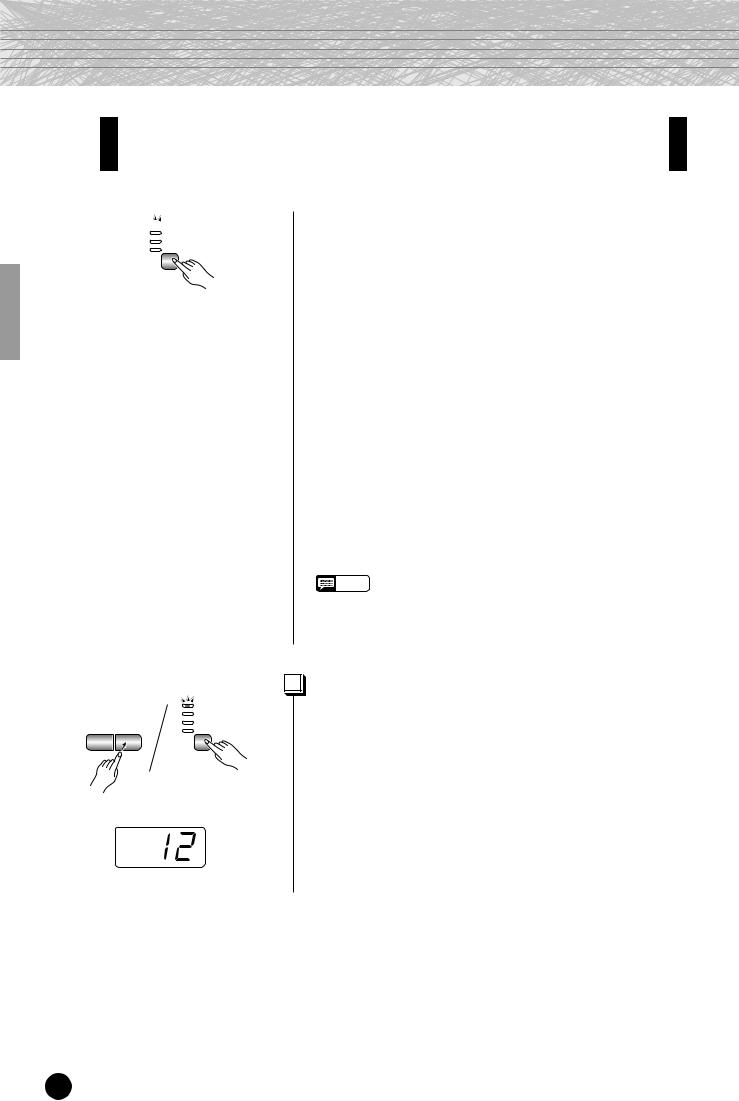
Reverb
The [REVERB] button selects a number of digital reverb effects that you can use for extra depth and expressive power.
 ROOM HALL 1 HALL 2 STAGE
ROOM HALL 1 HALL 2 STAGE
REVERB
To select a reverb type press the [REVERB] button a few times until the indicator corresponding to the desired type lights (the indicators light in sequence each time the [REVERB] button is pressed). No reverb is produced when all indicators are off.
OFF
No reverb effect is selected when no REVERB indicator is lit.
ROOM
This setting add a continuous reverb effect to the sound that is similar to the type of acoustic reverberation you would hear in a room.
HALL 1
For a ÒbiggerÓ reverb sound, use the HALL 1 setting. This effect simulates the natural reverberation of a small-size concert hall.
HALL 2
For a really spacious reverb sound, use the HALL 2 setting. This effect simulates the natural reverberation of a large concert hall.
STAGE
A simulation of the type of reverb produced in a stage environment.
NOTE ¥ The default reverb type (including OFF) and depth settings are different for each voice.
¥Even if the REVERB effect is OFF, a Òsoundboard reverbÓ effect will be applied when the CLP-950 GRAND PIANO 1 voice is selected.
Ð/NO +/YES |
ROOM |
|
HALL 1 |
|
HALL 2 |
|
STAGE |
REVERB
TEMPO/FUNCTION/SONG
Adjusting Reverb Depth .........................................................................
Adjust the reverb depth for the selected voice by using the [–/NO] and [+/YES] buttons while holding the [REVERB] button. The depth range is from 0 through 20 (the current depth setting appears on the LED display while the [REVERB] button is held). A setting of Ò0Ó produces no effect, while a setting of Ò20Ó produces maximum reverb depth. Press the [–/NO] and [+/YES] buttons simultaneously while holding the [REVERB] button to recall the default setting for the current voice (default depth settings are different for each voice).
18 CLP-950/930
Downloaded from: http://www.usersmanualguide.com/
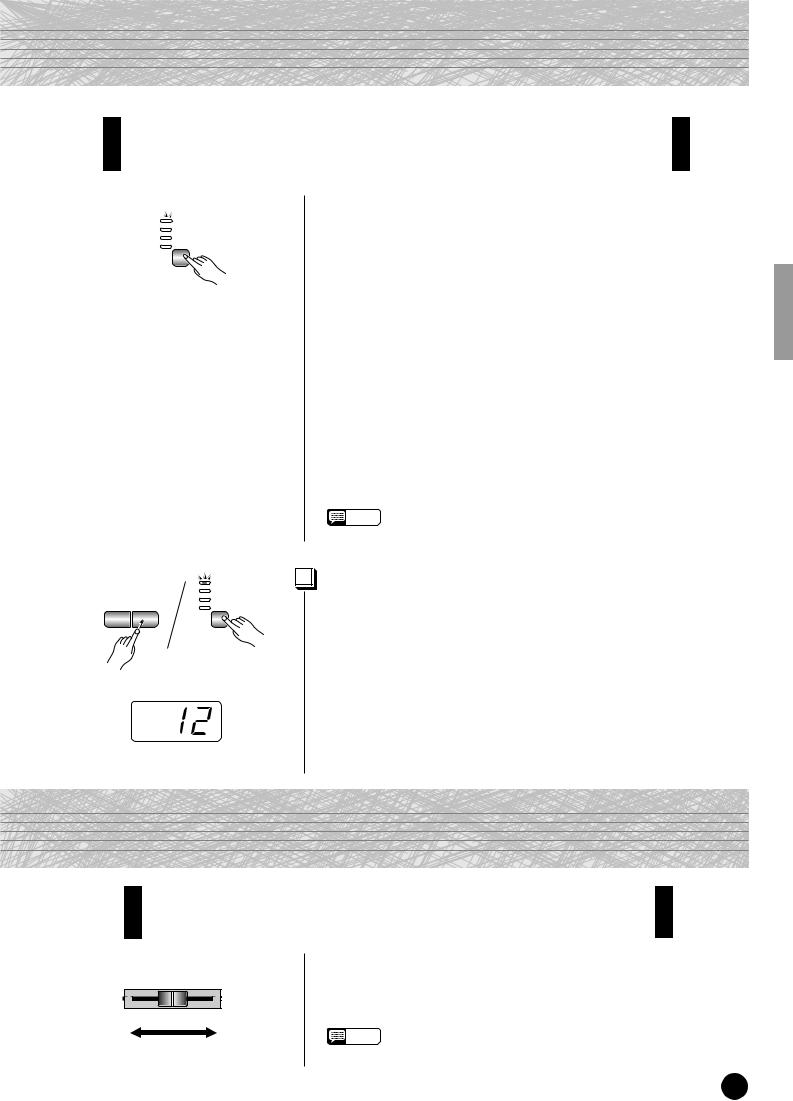
The Effect
The [EFFECT] button allows you to select one of the effects that can give your sound greater depth and animation.
 CHORUS
CHORUS
PHASER
TREMOLO
DELAY
EFFECT
Ð/NO +/YES |
CHORUS |
|
PHASER |
|
TREMOLO |
|
DELAY |
EFFECT
TEMPO/FUNCTION/SONG
To select an effect type press the [EFFECT] button a few times until the indicator corresponding to the desired type lights (the indicators light in sequence each time the [EFFECT] button is pressed). No effect is produced when all indicators are off.
OFF
No effect is selected when no EFFECT indicator is lit.
CHORUS
Shimmering, broadening effect
PHASER
Adds depth to the sound.
TREMOLO
Tremolo effect
DELAY
Echo effect
NOTE ¥ The default effect type (including OFF) and depth settings are different for each voice.
Adjusting Effect Depth.............................................................................
Effect depth can be individually adjusted for the selected voice by using the [–/NO] and [+/YES] buttons while holding the [EFFECT] button. The depth range is from 0 through 20 (the current depth setting appears on the LED display while the [EFFECT] button is held). A setting of Ò0Ó produces no effect, while a setting of Ò20Ó produces maximum effect depth. Press the [–/NO] and [+/YES] buttons simultaneously while holding the [EFFECT] button to recall the default setting for the current voice (the default depth settings are different for each voice).
Brilliance (CLP-950)
This control can be used to change the tonality or ÒtimbreÓ of the sound output. The control range is from MELLOW to BRIGHT.
MELLOW 







 BRIGHT
BRIGHT
BRILLIANCE
For a brighter or ÒsharperÓ tone, slide the control towards the BRIGHT position. For a ÒrounderÓ more mellow tone, slide the control towards the MELLOW position.
NOTE ¥ When the BRILLIANCE is set to BRIGHT, the overall sound will be slightly louder. If the MASTER VOLUME is set at a high level the sound may become distorted. If so, lower the MASTER VOLUME level.
CLP-950/930 19
Downloaded from: http://www.usersmanualguide.com/
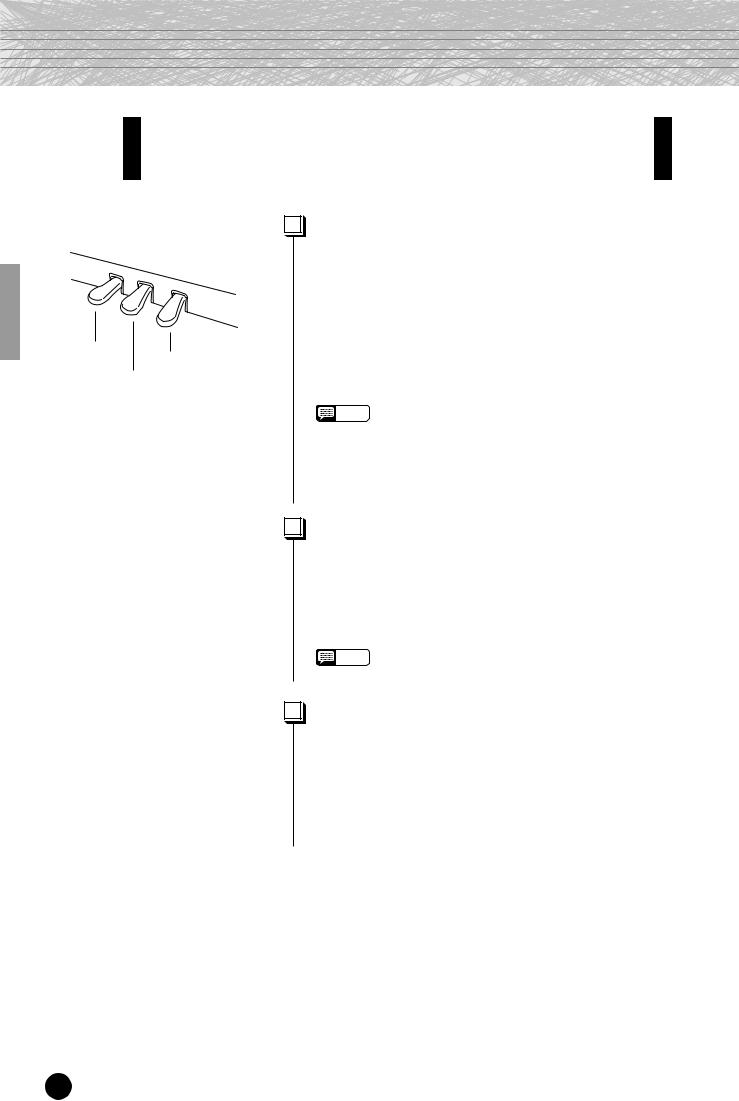
The Pedals
The Clavinova has three foot pedals that produce a range of expressive effects similar to those produced by the pedals on an acoustic piano.
Soft pedal
Damper pedal Sostenuto pedal
Damper (Right) Pedal ................................................................................
The damper pedal functions in the same way as a damper pedal on an acoustic piano. When the damper pedal is pressed notes played have a long sustain. Releasing the pedal immediately stops (damps) any sustained notes.
When the GRAND PIANO 1 voice is selected on the CLP-950, pressing the damper pedal activates the instrumentÕs special ÒSustain SamplesÓ to accurately recreate the unique resonance of an acoustic grand pianoÕs soundboard and strings.
NOTE ¥ On the CLP-950 the depth of the effect produced by the ÒSustain
SamplesÓ can be adjusted via the ÒPedal FunctionsÓ (page 32) in the function mode.
¥If the damper pedal doesnÕt work, or notes are sustained even when the pedal is not pressed, make sure that the pedal cord is properly plugged into the main unit (page 58: CLP-930, page 50: CLP-950).
Sostenuto (Center) Pedal ......................................................................
If you play a note or chord on the keyboard and press the sostenuto pedal while the note(s) are held, those notes will be sustained as long as the pedal is held (as if the damper pedal had been pressed) but all subsequently played notes will not be sustained. This makes it possible to sustain a chord, for example, while other notes are played Òstaccato.Ó
NOTE ¥ Organ, string and choir voices will continue to sound for as long as the sostenuto pedal is depressed.
Soft (Left) Pedal ...............................................................................................
The soft pedal reduces the volume and slightly changes the timbre of notes played while the pedal is pressed. The soft pedal will not affect notes which are already playing when it is pressed.
The left pedal can also be assigned to song start/stop operation via the ÒLeft Pedal ModeÓ described on pages 31 (CLP-930) and 32 (CLP950).
20 CLP-950/930
Downloaded from: http://www.usersmanualguide.com/
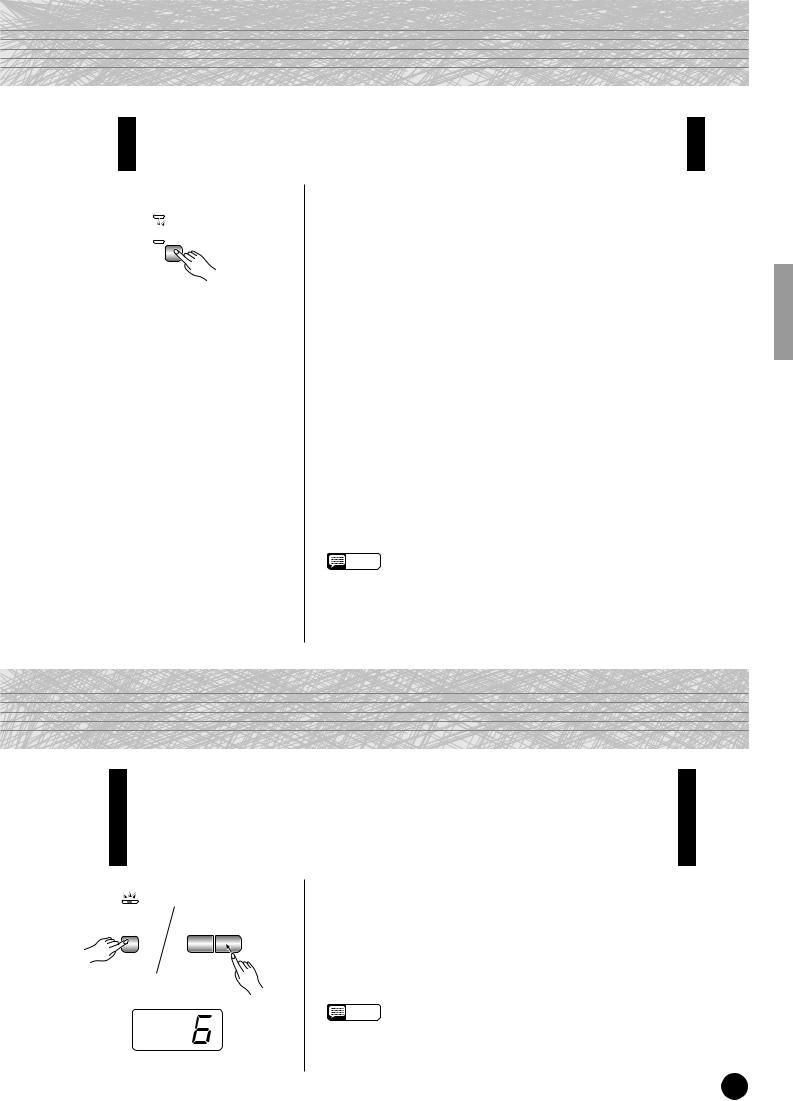
Touch Sensitivity
Four different types of keyboard touch sensitivity Ñ HARD, MEDIUM, SOFT or FIXED Ñ can be selected to match different playing styles and preferences.
HARD  MEDIUM
MEDIUM
SOFT
TOUCH
To select a touch sensitivity type press the [TOUCH] button a few times until the indicator corresponding to the desired type lights (the indicators light in sequence each time the [TOUCH] button is pressed).
HARD
The HARD setting requires the keys to be played quite hard to produce maximum loudness.
MEDIUM
The MEDIUM setting produces a fairly ÒstandardÓ keyboard response. This is the initial factory default setting.
SOFT
The SOFT setting allows maximum loudness to be produced with relatively light key pressure.
FIXED (no indicator lit)
All notes are produced at the same volume no matter how hard the keyboard is played.
When the FIXED type is selected, the volume of notes played in the FIXED mode can be set by using the [Ð/NO] and [+/YES] buttons while the [TOUCH] button is held (the current volume level appears on the display). The volume range is from 1 through 127. The default setting is 64.
NOTE ¥ This setting does not change the weight of the keyboard.
¥The touch sensitivity type and volume set in the FIXED mode will become the common setting for all voices. However, the touch sensitivity settings may have little or no effect with certain voices which are not normally responsive to keyboard dynamics (Refer to the ÒVoice DescriptionsÓ on page 41).
Transposition
The ClavinovaÕs TRANSPOSE function makes it possible to shift the pitch of the entire keyboard up or down in semitone intervals up to a maximum of 12 semitones (i.e. a maximum of one octave up or down). ÒTransposingÓ the pitch of the Clavinova keyboard facilitates playing in difficult key signatures, and you can easily match the pitch of the keyboard to the range of a singer or other instrumentalist.
ON |
Ð/NO +/YES |
TRANSPOSE
TEMPO/FUNCTION/SONG
Use the [–/NO] or [+/YES] button while holding the [TRANSPOSE] button to transpose down or up as required. The transposition range is from ÒÐ12Ó (down one octave) through Ò0Ó (normal pitch) to Ò12Ó (up one octave). The amount of transposition appears on the LED display while the [TRANSPOSE] button is held. The default transpose setting is Ò0Ó.
NOTE ¥ The [TRANSPOSE] button indicator remains lit when a transpose setting other than Ò0Ó is selected.
¥Notes below and above the A-1 É C7 range of the Clavinova sound one octave higher and lower, respectively.
CLP-950/930 21
Downloaded from: http://www.usersmanualguide.com/
